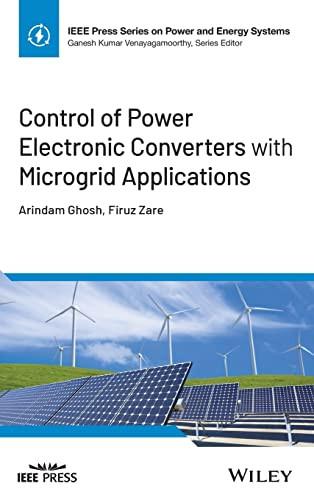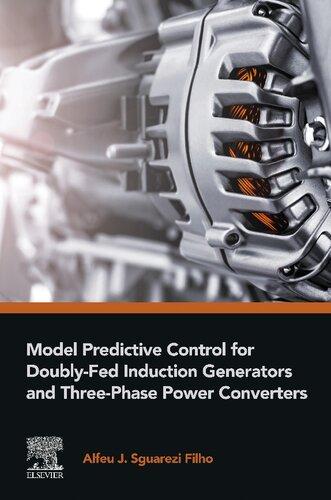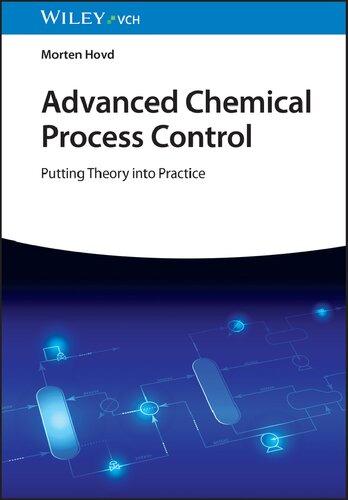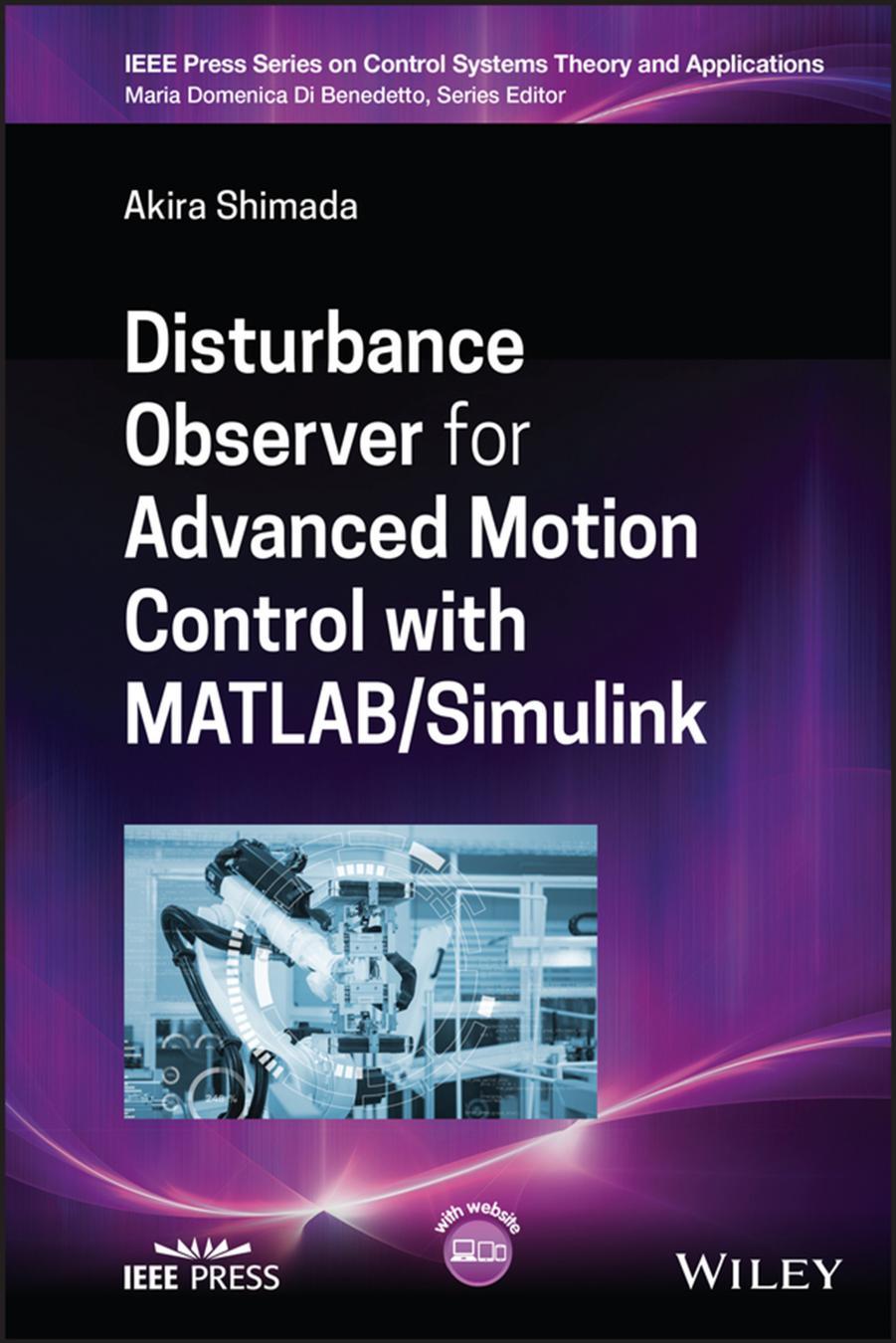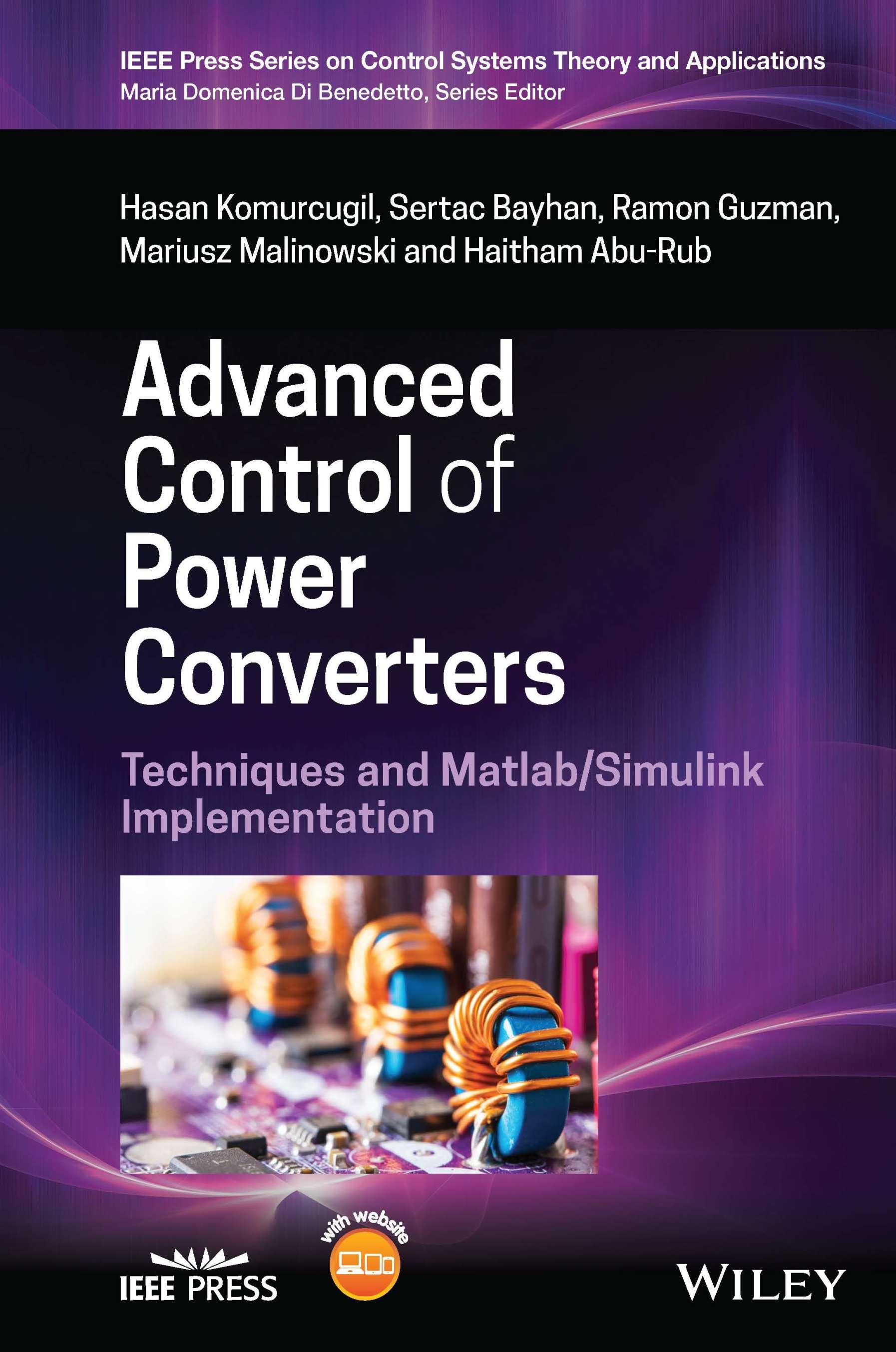AdvancedControlofPower Converters
IEEEPress
445HoesLane Piscataway,NJ08854
IEEEPressEditorialBoard
SarahSpurgeon, EditorinChief
JónAtliBenediktssonBehzadRazaviJeffreyReed AnjanBoseJimLykeDiomidisSpinellis JamesDuncanHaiLiAdamDrobot
AminMoenessBrianJohnsonTomRobertazzi DesineniSubbaramNaiduAhmetMuratTekalp
AdvancedControlofPowerConverters
TechniquesandMATLAB/SimulinkImplementation
HasanKomurcugil
EasternMediterraneanUniversity,Turkey
SertacBayhan
HamadBinKhalifaUniversity,Qatar
RamonGuzman
TechnicalUniversityofCatalonia,Spain
MariuszMalinowski
WarsawUniversityofTechnology,Poland
HaithamAbu-Rub
TexasA&MUniversity,Qatar
IEEEPressSeriesonControlSystemsTheoryandApplications
MariaDomenicaDiBenedetto,SeriesEditor
Copyright©2023byTheInstituteofElectricalandElectronicsEngineers,Inc.Allrightsreserved.
PublishedbyJohnWiley&Sons,Inc.,Hoboken,NewJersey. PublishedsimultaneouslyinCanada.
Nopartofthispublicationmaybereproduced,storedinaretrievalsystem,ortransmittedinany formorbyanymeans,electronic,mechanical,photocopying,recording,scanning,orotherwise, exceptaspermittedunderSection107or108ofthe1976UnitedStatesCopyrightAct,without eitherthepriorwrittenpermissionofthePublisher,orauthorizationthroughpaymentofthe appropriateper-copyfeetotheCopyrightClearanceCenter,Inc.,222RosewoodDrive,Danvers, MA01923,(978)750-8400,fax(978)750-4470,oronthewebatwww.copyright.com.Requeststo thePublisherforpermissionshouldbeaddressedtothePermissionsDepartment,JohnWiley& Sons,Inc.,111RiverStreet,Hoboken,NJ07030,(201)748-6011,fax(201)748-6008,oronlineat http://www.wiley.com/go/permission.
Trademarks:WileyandtheWileylogoaretrademarksorregisteredtrademarksofJohn Wiley&Sons,Inc.and/oritsaffiliatesintheUnitedStatesandothercountriesandmaynotbeused withoutwrittenpermission.Allothertrademarksarethepropertyoftheirrespectiveowners. JohnWiley&Sons,Inc.isnotassociatedwithanyproductorvendormentionedinthisbook.
LimitofLiability/DisclaimerofWarranty:Whilethepublisherandauthorhaveusedtheirbest effortsinpreparingthisbook,theymakenorepresentationsorwarrantieswithrespecttothe accuracyorcompletenessofthecontentsofthisbookandspecificallydisclaimanyimplied warrantiesofmerchantabilityorfitnessforaparticularpurpose.Nowarrantymaybecreatedor extendedbysalesrepresentativesorwrittensalesmaterials.Theadviceandstrategiescontained hereinmaynotbesuitableforyoursituation.Youshouldconsultwithaprofessionalwhere appropriate.Further,readersshouldbeawarethatwebsiteslistedinthisworkmayhavechanged ordisappearedbetweenwhenthisworkwaswrittenandwhenitisread.Neitherthepublishernor authorsshallbeliableforanylossofprofitoranyothercommercialdamages,includingbutnot limitedtospecial,incidental,consequential,orotherdamages.
Forgeneralinformationonourotherproductsandservicesorfortechnicalsupport,pleasecontact ourCustomerCareDepartmentwithintheUnitedStatesat(800)762-2974,outsidetheUnited Statesat(317)572-3993orfax(317)572-4002.
Wileyalsopublishesitsbooksinavarietyofelectronicformats.Somecontentthatappearsinprint maynotbeavailableinelectronicformats.FormoreinformationaboutWileyproducts,visitour websiteatwww.wiley.com.
LibraryofCongressCataloging-in-PublicationDataAppliedfor: Hardback:9781119854401
CoverDesign:Wiley
CoverImage:©kozirsky/Shutterstock.com
Setin9.5/12.5ptSTIXTwoTextbyStraive,Pondicherry,India
Contents
AbouttheAuthors xiii
ListofAbbreviations xvii
Preface xix
Acknowledgment xxi
AbouttheCompanionWebsite xxiii
1Introduction 1
1.1GeneralRemarks 1
1.2BasicClosed-LoopControlforPowerConverters 3
1.3MathematicalModelingofPowerConverters 4
1.4BasicControlObjectives 6
1.4.1Closed-LoopStability 6
1.4.2SettlingTime 10
1.4.3Steady-StateError 11
1.4.4RobustnesstoParameterVariationsandDisturbances 12
1.5PerformanceEvaluation 12
1.5.1Simulation-BasedMethod 12
1.5.2ExperimentalMethod 13
1.6ContentsoftheBook 13 References 15
2IntroductiontoAdvancedControlMethods 17
2.1ClassicalControlMethodsforPowerConverters 17
2.2SlidingModeControl 18
2.3LyapunovFunction-BasedControl 22
2.3.1Lyapunov’sLinearizationMethod 23
2.3.2Lyapunov’sDirectMethod 24
2.4ModelPredictiveControl 27
2.4.1FunctionalPrinciple 27
2.4.2BasicConcept 28
2.4.3CostFunction 29 References 30
3DesignofSlidingModeControlforPowerConverters 33
3.1Introduction 33
3.2SlidingModeControlofDC–DCBuckandCukConverters 33
3.3SlidingModeControlDesignProcedure 44
3.3.1SelectionofSlidingSurfaceFunction 44
3.3.2ControlInputDesign 46
3.4ChatteringMitigationTechniques 48
3.4.1HysteresisFunctionTechnique 48
3.4.2BoundaryLayerTechnique 49
3.4.3StateObserverTechnique 50
3.5ModulationTechniques 51
3.5.1HysteresisModulationTechnique 51
3.5.2SinusoidalPulseWidthModulationTechnique 52
3.5.3SpaceVectorModulationTechnique 53
3.6OtherTypesofSlidingModeControl 54
3.6.1TerminalSlidingModeControl 54
3.6.2Second-OrderSlidingModeControl 54 References 55
4DesignofLyapunovFunction-BasedControlforPowerConverters 59
4.1Introduction 59
4.2Lyapunov-Function-BasedControlDesignUsingDirectMethod 59
4.3LyapunovFunction-BasedControlofDC–DCBuckConverter 62
4.4LyapunovFunction-BasedControlofDC–DCBoostConverter 67 References 71
5DesignofModelPredictiveControl 73
5.1Introduction 73
5.2PredictiveControlMethods 73
5.3FCSModelPredictiveControl 75
5.3.1DesignProcedure 76
5.3.2Tutorial1:ImplementationofFCS-MPCforThree-PhaseVSI 80
5.4CCSModelPredictiveControl 86
5.4.1IncrementalModels 86
5.4.2PredictiveModel 88
5.4.3CostFunctioninCCSMPC 92
5.4.4CostFunctionMinimization 93
5.4.5RecedingControlHorizonPrinciple 96
5.4.6Closed-LoopofanMPCSystem 97
5.4.7DiscreteLinearQuadraticRegulators 97
5.4.8FormulationoftheConstraintsinMPC 99
5.4.9OptimizationwithEqualityConstraints 103
5.4.10OptimizationwithInequalityConstraints 105
5.4.11MPCforMulti-InputMulti-OutputSystems 108
5.4.12Tutorial2:MPCDesignForaGrid-ConnectedVSIin dq Frame 109
5.5DesignandImplementationIssues 112
5.5.1CostFunctionSelection 112
5.5.1.1ExamplesforPrimaryControlObjectives 113
5.5.1.2ExamplesforSecondaryControlObjectives 114
5.5.2WeightingFactorDesign 114
5.5.2.1EmpiricalSelectionMethod 115
5.5.2.2Equal-WeightedCost-Function-BasedSelectionMethod 116
5.5.2.3LookupTable-BasedSelectionMethod 117 References 118
6MATLAB/SimulinkTutorialonPhysicalModelingand ExperimentalSetup 121
6.1Introduction 121
6.2BuildingSimulationModelforPowerConverters 121
6.2.1BuildingSimulationModelforSingle-PhaseGrid-ConnectedInverter BasedonSlidingModeControl 122
6.2.2BuildingSimulationModelforThree-PhaseRectifierBasedon Lyapunov-Function-BasedControl 126
6.2.3BuildingSimulationModelforQuasi-ZSourceThree-PhaseFour-Leg InverterBasedonModelPredictiveControl 131
6.2.4BuildingSimulationModelforDistributedGenerationsinIslandedAC Microgrid 137
6.3BuildingReal-TimeModelforaSingle-PhaseT-TypeRectifier 142
6.4BuildingRapidControlPrototypingforaSingle-PhaseT-Type Rectifier 154
6.4.1ComponentsintheExperimentalTestbed 155
6.4.1.1GridSimulator 155
6.4.1.2ASingle-PhaseT-TypeRectifierPrototype 156
6.4.1.3MeasurementBoard 157
6.4.1.4ProgrammableLoad 158
6.4.1.5Controller 158
6.4.2BuildingControlStructureonOP-5707 158 References 162
7SlidingModeControlofVariousPowerConverters 163
7.1Introduction 163
7.2Single-PhaseGrid-ConnectedInverterwithLCLFilter 163
7.2.1MathematicalModelingofGrid-ConnectedInverterwithLCL Filter 164
7.2.2SlidingModeControl 165
7.2.3PWMSignalGenerationUsingHysteresisModulation 168
7.2.3.1Single-BandHysteresisFunction 168
7.2.3.2Double-BandHysteresisFunction 168
7.2.4SwitchingFrequencyComputation 170
7.2.4.1SwitchingFrequencyComputationwithSingle-BandHysteresis Modulation 170
7.2.4.2SwitchingFrequencyComputationwithDouble-BandHysteresis Modulation 171
7.2.5SelectionofControlGains 172
7.2.6SimulationStudy 174
7.2.7ExperimentalStudy 177
7.3Three-PhaseGrid-ConnectedInverterwithLCLFilter 180
7.3.1PhysicalModelEquationsforaThree-PhaseGrid-ConnectedVSIwithan LCLFilter 181
7.3.2ControlSystem 182
7.3.2.1ReducedState-SpaceModeloftheConverter 183
7.3.2.2ModelDiscretizationandKFAdaptiveEquation 187
7.3.2.3SlidingSurfaceswithActiveDampingCapability 188
7.3.3StabilityAnalysis 189
7.3.3.1Discrete-TimeEquivalentControlDeduction 189
7.3.3.2Closed-LoopSystemEquations 191
7.3.3.3TestofRobustnessAgainstParametersUncertainties 192
7.3.4ExperimentalStudy 192
7.3.4.1TestofRobustnessAgainstGridInductanceVariations 192
7.3.4.2TestofStabilityinCaseofGridHarmonicsNeartheResonance Frequency 196
7.3.4.3TestoftheVSIAgainstSuddenChangesintheReferenceCurrent 196
7.3.4.4TestoftheVSIUnderDistortedGrid 198
7.3.4.5TestoftheVSIUnderVoltageSags 198
7.3.5ComputationalLoadandPerformancesoftheControlAlgorithm 199
7.4Three-PhaseAC–DCRectifier 200
7.4.1NonlinearModeloftheUnityPowerFactorRectifier 200
7.4.2ProblemFormulation 202
7.4.3Axis-DecouplingBasedonanEstimator 203
7.4.4ControlSystem 205
7.4.4.1KalmanFilter 206
7.4.4.2PracticalConsiderations:ElectionofQandRMatrices 208
7.4.4.3PracticalConsiderations:ComputationalBurdenReduction 208
7.4.5SlidingModeControl 209
7.4.5.1InnerControlLoop 209
7.4.5.2OuterControlLoop 210
7.4.6HysteresisBandGeneratorwithSwitchingDecisionAlgorithm 212
7.4.7ExperimentalStudy 215
7.5Three-PhaseTransformerlessDynamicVoltageRestorer 224
7.5.1MathematicalModelingofTransformerlessDynamicVoltage Restorer 224
7.5.2DesignofSlidingModeControlforTDVR 225
7.5.3Time-VaryingSwitchingFrequencywithSingle-BandHysteresis 227
7.5.4ConstantSwitchingFrequencywithBoundaryLayer 229
7.5.5SimulationStudy 231
7.5.6ExperimentalStudy 233
7.6Three-PhaseShuntActivePowerFilter 240
7.6.1NonlinearModeloftheSAPF 240
7.6.2ProblemFormulation 242
7.6.3ControlSystem 243
7.6.3.1StateModeloftheConverter 243
7.6.3.2KalmanFilter 245
7.6.3.3SlidingModeControl 246
7.6.3.4HysteresisBandGeneratorwithSDA 247
7.6.4ExperimentalStudy 248
7.6.4.1ResponseoftheSAPFtoLoadVariations 249
7.6.4.2SAPFPerformancesUnderaDistortedGrid 253
7.6.4.3SAPFPerformancesUnderGridVoltageSags 254
7.6.4.4SpectrumoftheControlSignal 254 References 257
8DesignofLyapunovFunction-BasedControlofVariousPower Converters 261
8.1Introduction 261
8.2Single-PhaseGrid-ConnectedInverterwithLCLFilter 261
8.2.1MathematicalModelingandControllerDesign 261
8.2.2ControllerModificationwithCapacitorVoltageFeedback 264
8.2.3Inverter-SideCurrentReferenceGenerationUsingProportionalResonantController 264
8.2.4GridCurrentTransferFunction 266
8.2.5HarmonicAttenuationandHarmonicImpedance 267
Contents
8.2.6Results 270
8.3Single-PhaseQuasi-Z-SourceGrid-ConnectedInverterwithLCL Filter 277
8.3.1Quasi-Z-SourceNetworkModeling 277
8.3.2Grid-ConnectedInverterModeling 280
8.3.3ControlofQuasi-Z-SourceNetwork 281
8.3.4ControlofGrid-ConnectedInverter 281
8.3.5ReferenceGenerationUsingCascadedPRControl 282
8.3.6Results 283
8.4Single-PhaseUninterruptiblePowerSupplyInverter 287
8.4.1MathematicalModelingofUninterruptiblePowerSupplyInverter 287
8.4.2ControllerDesign 288
8.4.3CriteriaforSelectingControlParameters 290
8.4.4Results 292
8.5Three-PhaseVoltage-SourceAC–DCRectifier 298
8.5.1MathematicalModelingofRectifier 298
8.5.2ControllerDesign 301
8.5.3Results 304 References 307
9ModelPredictiveControlofVariousConverters 309
9.1CCSMPCMethodforaThree-PhaseGrid-ConnectedVSI 309
9.1.1ModelPredictiveControlDesign 310
9.1.1.1VSIIncrementalModelwithanEmbeddedIntegrator 310
9.1.1.2PredictiveModeloftheConverter 311
9.1.1.3CostFunctionMinimization 312
9.1.1.4InclusionofConstraints 313
9.1.2MATLAB®/Simulink® Implementation 315
9.1.3SimulationStudies 322
9.2ModelPredictiveControlMethodforSingle-PhaseThree-LevelShunt ActiveFilter 325
9.2.1ModelingofShuntActiveFilter(SAPF) 325
9.2.2TheEnergy-Function-BasedMPC 328
9.2.2.1DesignofEnergy-Function-BasedMPC 328
9.2.2.2Discrete-TimeModel 331
9.2.3ExperimentalStudies 332
9.2.3.1Steady-StateandDynamicResponseTests 333
9.2.3.2ComparisonwithClassicalMPCMethod 337
9.3ModelPredictiveControlofQuasi-ZSourceThree-PhaseFour-Leg Inverter 341
9.3.1qZSFour-LegInverterModel 341
9.3.2MPCAlgorithm 345
9.3.2.1DeterminationofReferences 345
9.3.2.2Discrete-TimeModelsoftheSystem 346
9.3.2.3CostFunctionOptimization 347
9.3.2.4ControlAlgorithm 347
9.3.3SimulationResults 349
9.4WeightingFactorlessModelPredictiveControlforDC–DCSEPIC Converters 352
9.4.1PrincipleofControlStrategy 352
9.4.1.1ConventionalModelPredictiveCurrentControl 355
9.4.1.2CostFunctionAnalysisofConventionalMPC 356
9.4.1.3CostFunctionDesignofPresentedMPCin[11] 358
9.4.1.4OutputVoltageControl 361
9.4.2ExperimentalResults 362
9.4.2.1SwitchingFrequencyControlTest 362
9.4.2.2DynamicResponseTestUnderInputVoltageVariation 363
9.4.2.3DynamicResponseTestUnderLoadChange 366
9.4.2.4InfluenceofParameterMismatch 367
9.5ModelPredictiveDroopControlofDistributedGenerationInvertersin IslandedACMicrogrid 370
9.5.1ConventionalDroopControl 370
9.5.2ControlTechnique 373
9.5.2.1ReferenceVoltageGenerationThroughDroopControl 373
9.5.2.2ModelPredictiveControl 374
9.5.3SimulationResults 376
9.6FCS-MPCforaThree-PhaseShuntActivePowerFilter 378
9.6.1SystemModeling 381
9.6.2ControlTechnique 383
9.6.3FCS-MPCwithReducedStates 384
9.6.3.1VectorSelectionBasedonVectorOperation 384
9.6.3.2CostFunctionMinimizationProcedure 387
9.6.3.3KalmanFilter 387
9.6.4ExperimentalResults 389
9.7FCS-MPCforaSingle-PhaseT-TypeRectifier 395
9.7.1ModelingofSingle-PhaseT-TypeRectifier 395
9.7.2ModelPredictiveControl 397
9.7.2.1SensorlessGridVoltageEstimation 397
9.7.2.2ReferenceCurrentGeneration 400
9.7.2.3MPCfortheT-TypeRectifier 400
9.7.2.4MPCforthePowerDecouplingCircuit 402
9.7.3ExperimentalStudies 404
9.7.3.1Steady-StateAnalysis 404
9.7.3.2RobustnessAnalysis 404
9.8PredictiveTorqueControlofBrushlessDoublyFedInductionGenerator FedbyaMatrixConverter 408
9.8.1OverviewoftheSystemModel 411
9.8.1.1TopologyOverview 411
9.8.1.2MathematicalModeloftheCDFIG 412
9.8.1.3MathematicalModeloftheMatrixConverter 414
9.8.2PredictiveTorqueControlofCDFIG 415
9.8.2.1OuterLoop 416
9.8.2.2InternalModeloftheController 416
9.8.2.3CostFunctionMinimization 418
9.8.3SimulationResults 418
9.9AnEnhancedFiniteControlSetModelPredictiveControlMethodwith Self-BalancingCapacitorVoltagesforThree-LevelT-Type
Rectifiers 420
9.9.1OverviewoftheSystemModel 422
9.9.2ProblemDefinition 424
9.9.3DerivationofLyapunov-EnergyFunction 425
9.9.4Discrete-TimeModel 428
9.9.5ExperimentalStudies 429
References 431
Index 435
AbouttheAuthors
HasanKomurcugil receivedtheBSc,MSc,andPhDdegreesfromtheEastern MediterraneanUniversity(EMU),Famagusta,NorthCyprus,ViaMersin10, Turkey,in1989,1991,and1998,respectively,allinelectricalengineering.Then, hewaspromotedtoassistantprofessorin1998,associateprofessorin2002,andfull professorin2008.From2004to2010,hewastheHeadoftheComputerEngineeringDepartment,EMU.In2010,heplayedanactiveroleinpreparingthedepartment’sfirstself-studyreportfortheuseofAccreditationBoardforEngineering andTechnology.In2010,hewaselectedastheastheBoardMemberofHigher Education,Planning,Evaluation,AccreditationandCoordinationCouncil (YODAK)NorthCyprus.From2010to2019,heplayedactiveroleinevaluating theuniversitiesinNorthCyprus.In2022,hevisitedTexasA&MUniversityat Qatarasanassociateresearchscientistintheelectricalandcomputerengineering program.Hehasauthoredmorethan70sciencecitationindexexpandedjournal papersand80conferencepapers.Hisresearchinterestsincludepowerelectronics andinnovativecontrolmethodsforpowerconverterssuchasslidingmodecontrol, Lyapunov-function-basedcontrol,andmodelpredictivecontrol.Heisacoauthor ofonebook(MultilevelInverters:IntroductionandEmergentTopologies)chapter. HeisamemberoftheIEEEIndustrialElectronicsSociety(IES)andSenior MemberoftheIEEE.HeservedastheCorrespondingGuestAssociateEditorof the IEEETransactionsonEnergyConversion andGuestEditorofthe IEEE TransactionsonIndustrialInformatics.Currently,heservesastheAssociateEditor ofthe IEEETransactionsonIndustrialElectronics andthe IEEETransactionson IndustrialInformatics.
SertacBayhan receivedtheMSandPhDdegreesinelectricalengineeringfrom GaziUniversity,Ankara,Turkeyin2008and2012,respectively.Hisundergraduatedegreewasalsoearnedatthesameuniversity,andhegraduatedasvaledictorian.HejoinedGaziUniversityasalecturerin2008andwaspromotedto associateprofessorandfullprofessorin2017and2022,respectively.Hewasan
associateresearchscientistatTexasA&MUniversityatQatarfrom2014to2018. Currently,Dr.BayhanisaseniorscientistatQatarEnvironmentandEnergy ResearchInstitute(QEERI)andanassociateprofessor(jointappointment)in HamadBinKhalifaUniversity’sSustainableDivision.Hisresearchencompasses powerelectronicsandtheirapplicationsinnext-generationpowerandenergysystems,includingrenewableenergyintegration,electrifiedtransportation,and demand-sidemanagement.
Dr.Bayhanistherecipientofmanypresti giousinternationalawards,suchas theTeachingExcellenceAwardinrecogn itionofoutstandingteachinginTexas A&MUniversityatQatarin2022,BestPaperawardsinthe3rdInternational ConferenceonSmartGridandRenewableEnergy,March20 –22,2022,Doha/ Qatarand10thInternationalConferenceonRenewableEnergyResearchand Applications,September26 – 29,2021,Istanbul/Turkey,theResearchFellow ExcellenceAwardinrecognitionofhisre searchachievementsandexceptional contributionstotheTexasA&MUniversityatQatarin2018.Hehasacquired $13Minresearchfundingandpublishedmorethan170papersinmostlyprestigiousIEEEjournalsandconferences.Heisalsothecoauthorofthreebooks andsixbookchapters.
Dr.BayhanhasbeenactiveseniormemberofIEEE.Becauseofthevisibility ofhisresearch,hehasbeenrecentlyelectedasanenergyclusterdelegateof theIndustrialElectronicsSociety(IES).In2020,hefoundedtheIESQatar SectionChapterandiscurrentlyitschair.Furthermore,hecurrentlyservesas associateeditorofthe IEEETransactionsonIndustrialElectronics, IEEEJournal ofEmergingandSelectedTopicsinIndustrialElectronics, IEEEOpenJournal oftheIndustrialElectronicsSociety,and IEEEIndustrialElectronicsTechnologyNews.
RamonGuzman receivedtheBSc,MSc,andPhDdegreesincommunications engineeringfromtheUnıversıtatPolitècnicadeCatalunya(UPC),in1999, 2004,and2016,respectively.Hewaspromotedtoassistantprofessorin2002 andassociateprofessorin2016.Currently,heisanassociateprofessorwiththe departmentofautomaticcontrolintheUniversitatPolitècnicadeCatalunya. Hehasauthoredmorethan40documentsincludingsciencecitationindex expandedjournalpapersandconferencepapers.Hisresearchinterestsinclude advancedcontrolmethodsforpowerconverterssuchasslidingmodecontrol, modelpredictivecontrol,amongothers.Heisacoauthorofthebook(ControlCircuitsinPowerElectronics )chapterandthebook(CommunicationinActiveDistributionNetworks)chapter.HeisamemberoftheIEEEIndustrialElectronics Society(IES)andSeniorMemberoftheIEEE.Currently,heservesasanassociate editorofthe IEEETransactionsonIndustrialElectronics.
MariuszMalinowski receivedaPhDdegreewithhonorsinElectricalEngineeringfromtheWarsawUniversityofTechnology(WUT)in2001.Hethenattaineda habilitationin2012andafullprofessortitlein2019.
HereceivedtheIEEEIndustrialElectronicsSociety(IES)DavidIrwinEarly CareerAwardfor"Outstandingresearchanddevelopmentofmodulationandcontrolforindustrialelectronicsconverters"in2011,IEEEIESDavidBimalBoseAward forIndustrialElectronicsApplicationsinEnergySystemsfor"Contributionsincontrolofindustrialelectronicsconvertersapplicationsinenergysystems"in2015,and PowerElectronicsandMotionControl(PEMC)IstvanNagyAwardin2021.
MariuszMalinowskihaspublishedmanyjournalsandconferencepapersandis aco-authoroffivebooks.HehasparticipatedinmanyresearchandindustrialprojectsandhasbeenareviewerandPhDcommissionmemberfornumerousPhD thesesinGermany,Spain,Denmark,Australia,India,Switzerland,andPoland.
MariuszMalinowski’spublicserviceincludesactivityinIEEE,wherehewas editor-in-chiefof IEEEIndustrialElectronicsMagazine,associateeditorof IEEE TransactionsonIndustrialElectronics,andassociateeditorof IEEETransactions onPowerElectronics.MariuszMalinowskiiscurrentlythepastchairoftheIEEE PolandSectionandpresidentoftheIEEEIndustrialElectronicsSociety.Hehasan IEEEFellowstatus.
MariuszMalinowskiparticipatedinthedevelopmentoftechnologiesthat receivedmanyprizese.g.threetimesrecognitioninthecompetitionPolishProductoftheFutureorganizedbythePolishAgencyforEnterpriseDevelopment (PARP),theGrandPrixExhibitionofInnovationsinGeneva(GoldMedal)and theExhibitioninBrussels “Eureco” (BronzeMedal).
MariuszMalinowskiwasvisitingscholarandprofessorinthefollowinginstitutions:AalborgUniversity(Denmark),UniversityofNevada(Reno,USA),TechnicalUniversityofBerlin(Germany),UniversidadTecnicaFedericoSantaMarıa (Valparaıso,Chile),ENSEEIHT-Laplace,Toulouse(France),andETHZurich (Switzerland).
HaithamAbu-Rub isafullprofessorholdingtwoPhDsfromGdanskUniversity ofTechnology(1995)andfromGdanskUniversity(2004).Dr.AbuRubhaslong teachingandresearchexperiencesatmanyuniversitiesinmanycountriesincludingQatar,Poland,Palestine,USA,andGermany.
Since2006,Dr.Abu-RubhasbeenassociatedwithTexasA&MUniversityat Qatar,wherehehasservedforfiveyearsasthechairofElectricalandComputer EngineeringProgramandhasbeenservingasthemanagingdirectoroftheSmart GridCenteratthesameuniversity.
Hismainresearchinterestsareenergyconversionsystems,smartgrid,renewableenergysystems,electricdrives,andpowerelectronicconverters.
Dr.Abu-Rubistherecipientofmanyprestigiousinternationalawardsand recognitions,suchastheAmericanFulbrightScholarshipandtheGermanAlexandervonHumboldtFellowship.Hehasco-authoredaround400journalandconferencepapers,fivebooks,andfivebookchapters.Dr.Abu-RubisanIEEEfellow andco-editorinchiefoftheIEEETransactionsonIndustrialElectronics.
ListofAbbreviations
ACAlternatingCurrent
ADCAnalogDigitalConverter
BDFIGBrushlessDoublyFedInductionGenerator
CCSMPCContinuousControlSetModelPredictiveControl
CDFIGCascadedDoublyFedInductionGenerator
CMControlMachine
CMVCommonModeVoltage
CPLConstantPowerLoad
CRLConstantResistiveLoad
DCDirectCurrent
DGDistributedGeneration
DLQRDiscreteLinearQuadraticRegulator
DPCDirectPowerControl
DSPDigitalSignalProcessor
EKFExtendedKalmanFilter
EVElectricVehicle
FCSFiniteControlSet
FCSMPCFinitecontrolsetmodelpredictivecontrol
FPGAFieldProgrammableGateArray
HMHysteresisModulation
IGBTInsulatedGateBipolarTransistor
ISMCIntegralSlidingModeControl
KFKalmanFilter
KKTKarush–Kuhn–Tucker
MCUMicrocontrollerunit
MIMOMulti-InputMulti-Output
MIPSMillionsInstructionsPerSecond
MOSFETMetalOxideSemiconductorFieldEffectTransistor
xviii ListofAbbreviations
MPCModelPredictiveControl
MRASModelReferenceAdaptiveSystem
NPCNeutralPointClamped
PCCPointofCommonCoupling
PIProportionalIntegral
PIDProportionalIntegralDerivative
PLLPhase-LockedLoop
PMPowerMachine
PRProportionalResonant
PTCPredictiveTorqueControl
PVPhotovoltaic
PWMPulseWidthModulation
qZSQuasiZSource
qZSIQuasiZSourceInverter
RMSRootMeanSquare
SAPFShuntActivePowerFilter
SDASwitchingDecisionAlgorithm
SEPICSingle-EndedPrimary-InductorConverters
SISOSingle-InputSingle-Output
SMCSlidingModeControl
SpaceVectorModulation
SPWMSinusoidalPulseWidthModulation
STASuperTwistingAlgorithm
TDVRTransformerlessDynamicVoltageRestorer
THDTotalHarmonicDistortion
TSMCTerminalSlidingModeControl
UPFRUnityPowerFactorRectifier
UPSUninterruptiblePowerSupply
VFDVariableFrequencyDrive
VOCVoltageOrientedControl
VSIVoltageSourceInverter
VSSVariableStructureSystem
WFWeightingFactor
Preface
Powerelectronicsconvertersplayanimportantroleineverystageoftoday’smodernizedworldincludingcomputers,smarthomesystems,electricvehicles,airplanes,trains,marineelectricalsystems,microgrids,robots,renewableenergy sourceintegrationsystems,residential,andmanyindustrialapplications.The mainfunctionofapowerconverteristoachieveDC–DC,DC–AC,AC–DC,and AC–ACpowerconversionwithhighperformanceintermsofefficiency,stability, robustness,reducedcomplexity,andlowcost.Apowerconverterconsistsof switchingdevicesanddiodes,whichareturnedonandoffbasedonacontrolstrategyforachievingthedesiredpowerconversionperformance.Hence,thecontrolof powerconvertersisthekeypointinachievingthedesiredtarget.
Thetraditionalcontroltechniquesthatarebasedonthelinearizedmodel(smallsignalmodel)ofconverteroffersatisfactoryperformancearoundtheoperating point.However,thesecontrolstrategiesfailinachievingthedesiredperformance awayfromtheoperatingpoint.Inthelasttwodecades,manyadvancednonlinear controlstrategies,suchasslidingmodecontrol,Lyapunovfunction-basedcontrol, andmodelpredictivecontrol,havereceivedsignificantattentionofmany researchersandpracticingengineers.Theeffectivenessofthesecontrolmethods hasbeenprovedinliterature.Consideringtheadvantagesandsuperiorityof nonlinearcontrol,itisessentialandtimelytowriteacomprehensivebooktopresentthefundamentalideas,designguidelines,mathematicalmodeling,and MATLAB®\Simulink®-basedsimulationoftheseadvancedcontrolstrategiesfor variouspowerconvertersemployedinmanyapplications.Thus,wedecidedto writethisbooktocovertheadvancednonlinearcontrolmethodsofpowerelectronicconvertersinasinglesource.Thebookprovidesauniquecombinationof theadvancednonlinearcontrolmethodsmentionedaboveforvariouspower convertersandapplications.Furthermore,eachcontrolmethodissupportedby simulationexamplesalongwithMATLAB®\Simulink® models,whichwillmake thebookofhighbenefitforresearchers,engineeringprofessionals,andundergraduate/graduatestudentsinelectricalengineeringandmechatronicsareas.
Preface
Thisbookhasninechaptersthatcanbedividedintofourparts.Inthefirstpart,a briefintroductionofslidingmodecontrol,Lyapunovfunction-basedcontrol,and modelpredictivecontrolmethodsispresented(Chapters1and2).Inthesecond part,designguidelinesofthesecontrolmethodsarepresentedindetail(Chapters 3–5).ThirdpartpresentsatutorialonphysicalmodelingandexperimentalverificationusingMATLAB®\Simulink® (Chapter6).Finally,casestudiesofvarious powerconverterapplicationsaregiveninthefourthpart(Chapters7–9).These casestudiesaremainlybasedonourownresearchworkavailableinliterature. Wehavecarefullyselectedeachcasestudytocoverawiderangeofconverter applications.AllSimulinkmodelsreferredtointhecasestudiesareprovided assupplementarymaterialtobedownloadedfromthewebsiteprovidedbythe publisher.TheseMATLAB®\Simulink® modelswillbeveryhelpfulinlearning thebasicsofthesecontrolmethods.Inthisrespect,webelievethatthisbook fillsthegapbetweentheoryandpracticeandprovidespracticalguidanceto theresearchers,graduateandseniorundergraduatestudents,andpracticing engineersfordesigninganddevelopingtheseadvancedcontrolmethodsusing MATLAB®\Simulink® .
Acknowledgment
Wewouldliketotakethisopportunitytoexpressoursincereappreciationtoallthe peoplewhoweredirectlyorindirectlyhelpfulinmakingthisbookareality.We emphasizethatportionsofthebookappearedinearlierformsasjournalpapers andconferencepaperswithsomeofourstudentsandcolleagues.Duetothisfact, ourspecialthanksgotoallofthem.
WearegratefultotheQatarNationalResearchFund(amemberofQatarFoundation)forfundingmanyoftheresearchprojects,whoseoutcomeshelpedusin preparingmajorpartofthisbook.Chapters1–4forNPRPgrant(NPRP12S0226-190158),Chapters7and8forNPRPgrant(NPRP12C-33905-SP-220),and Chapters5,6,and9forNPRPgrant(NPRP12S-0214-190083).Thestatements madehereinaresolelytheresponsibilityoftheauthors.
ThisworkwassupportedinpartbytheOPUSprogramoftheNationalScience CentreofPolandunderGrantNCN2018/31/B/ST7/00954.
ThisworkisalsosupportedinpartbytheR+D+iprojectPID2021-122835OBC21,financedbyMCIN/AEI/10.13039/501000011033andFEDER “AwayofmakingEurope.”
Also,weappreciatethehelpfrommanycolleaguesforprovidingconstructive feedbackonthematerialandforediting.ParticularappreciationgoestoDr.Naki GulerfromGaziUniversity,Turkey,forhisgreathelpnotonlyindrawingmanyof thefiguresbutalsoincreatingsomeoftheMATLAB®\Simulink® models.
Finally,weareindebtedtoourfamiliesfortheircontinuedsupport,endless patience,awonderfulworkingenvironmentathome,especiallyduringthedifficulttimeoftheCOVID-19pandemic,andencouragement,withoutwhichthis bookwouldnothavebeencompleted.
HasanKomurcugil SertacBayhan RamonGuzman MariuszMalinowski HaithamAbu-Rub
Thisbookisaccompaniedbythecompanionwebsite: www.wiley.com/go/komurcugil/advancedcontrolofpowerconverters
ThewebsiteincludescasestudiesofSimulinkmodel.
1.1GeneralRemarks
Powerelectronicsconvertersarewidelyutilizedinalmosteveryaspectoftodays’ modernizedworldincludingcomputers,smarthomesystems,electricvehicles (EVs),trains,marine,aircrafts,microgrids,robots,renewableenergyconversion andintegration,andmanyindustrialapplications.Themainfunctionofapower converteristoconverttheelectricalpowerfromoneformtotheother[1].In general,therearefourdifferentcategoriesofpowerconverters:DC–DC,AC–DC, DC–AC,andAC–AC.Ineachcategory,variousconvertertopologieshavebeen developedtomeetthedesiredconversionandapplicationobjectives.Forinstance, whenthephotovoltaic(PV)energyistobeconvertedandinjectedintothegrid,a DC–DCboostconverterisconnectedbetweenthePVpanelandDC–ACinverterto ensureaconstantinverterinputvoltageandtopossiblytrackthepanel’smaximumpowerpoint.ThenecessityofDC–DCboostconverterinsuchapplication arisesduetothebuckoperationoftheinverter(i.e.DCinputvoltageisgreater thantheamplitudeofitsACvoltage).Ontheotherhand,anAC–DCconverter (usuallyreferredtoasrectifier)isusedinanelectricvehicle(EV)chargingsystem toconvertthegrid’sACvoltagetoDCsuchthatthebatterycanbecharged. Anotherexampleistheuseofseriesactivefilter(usuallyreferredtoasdynamic voltagerestorer)intheprotectionofsensitiveloads(i.e.medicalequipmentin thehospitals,datacenters,andsoon)againstvoltagesags,andvoltageswells inthegridvoltage.Whensuchvoltagevariationsoccurinthegrid,theseriesactive filter,whichisbuiltusingaDC–ACinverter,generatesandinjectstherequired compensationvoltagetothepointofcommoncouplingsuchthatthesensitiveload 1 AdvancedControlofPowerConverters:TechniquesandMATLAB/SimulinkImplementation, FirstEdition.HasanKomurcugil,SertacBayhan,RamonGuzman,MariuszMalinowski, andHaithamAbu-Rub.
©2023TheInstituteofElectricalandElectronicsEngineers,Inc. Published2023byJohnWiley&Sons,Inc. Companionwebsite:www.wiley.com/go/komurcugil/advancedcontrolofpowerconverters
voltageisalwayskeptatthedesiredvalue.Similarexamplescanbegivenforthe otherconvertercategories.
Thus,consideringtheimportanceoftoday’senergydemandandtheneedfor cleanandreliableresources,theuseofpowerelectronicshasincreasedtremendously.Assuch,theperformanceofthepowerconvertersusedintheseapplicationshasgainedutmostimportance.Inmostofthepowerelectronics-related applications,closed-loopcontrolisessentialtokeepthevoltageorcurrentatreferencevaluesundervariousconditions,whichincludeloadchanges,gridvoltage deterioration(voltagesags,voltageswells,anddistortedgridvoltages),andparametervariations,whichoccurbecauseofagingandoperatingconditions.More importantly,thestabilityofclosed-loopsystemshouldnotbejeopardizedunder thesesituations.Forthisreason,thedesignofaclosed-loopsystemthatresponds tothesechallengesisanessentialanddifficulttask.Firstofall,itshouldbenoted thatthedesignofclosed-loopcontrolforpowerelectronicsconvertersrequiresa deepknowledgeinmanyareassuchascircuitanalysis,advancedmathematics, modeling,controlsystems,andpowerelectronics.Inthisregard,thischapterstarts withtheintroductionofsimplestclosed-loopcontrolforpowerconverters.Then, mathematicalmodeling,basiccontrolobjectives,andperformanceevaluationare explainedbriefly.Hence,thereaderisurgedtorefreshorgainfurtherbasicinformationintheareasofcontroltheoryandpowerelectronicsconvertersfromthe literature.
Thisbookisprimarilyconcernedw ithadvancednonlinearcontrolof powerconverters.Aclosed-loopcontro lisreferredtoasnonlinearcontrolifit containsatleastonenonlinearcompone nt.Nonlinearcontrolofpowerconvertersreceivedattentionofmanyresearchersinthelasttwodecades.Themain reasonofthispopularitycomesfromthe advantagesoverlinearcontrolmethods, whichlackguaranteedstabilityinlargeo perationrangeoftheconverters;facing hardnonlinearities(saturation,dead-zone,backlash,andhysteresis),which cannotbeapproximatedlinearly;andhavingmodeluncertainties,whichare assumedtobeknownwhendesigningthe linearcontroller.Whereasthenonlinearcontrolisabletocopewiththeproblemsmentionedabove.Inthisbook, slidingmodecontrol,Lyapunovfunction-basedcontrol,andmodelpredictive controlmethodologiesareexplainedforpowerconverters.Althoughthesenonlinearcontrolmethodsarenotnew,their applicationinpowerconvertercontrol waslimitedinthepastduetotherequiredextensivecomputations.Sincelast decade,theadventoffastimplementationplatformssuchasdigitalsignalprocessorsandfieldprogrammablegatearrays(FPGAs)relievedthecomputation burdenissue.Therefore,compilingthedesignandapplicationofthenonlinear controlmethodsmentionedaboveinasinglebookisverybeneficialfortheinterestedreaders.
1.2BasicClosed-LoopControlforPowerConverters 3
1.2BasicClosed-LoopControlforPowerConverters
Abasicsingleinputsingleoutput(SISO)closed-looppowerconvertercontrol systemisillustratedinFigure1.1.Here,themainaimistocontrolthepower converterinordertoaccomplishspecificdesiredcontrolobjectives(see Section1.4).Clearly,theoutputsignal(i.e.voltageorcurrent)ismeasuredand comparedwiththereferenceonetoproduceanerrorsignal.Thiserrorsignalis appliedtothecontroller.Then,thecontrollergeneratesmodulationsignalfrom whichthepulsewidthmodulation(PWM)signalsaregenerated.Thesesignals areappliedtothegatesofswitchingdevices(i.e.insulatedgatebipolartransistors [IGBTs],metaloxidesemiconductorfieldeffecttransistors[MOSFETs],etc.)inthe powerconverter.UpontheapplicationofPWMsignals,theswitchingdevicesare turnedonandoff.Thevalueofvoltage(orcurrent)intheconverterischangedby theseswitchingactions.Ifthecontrolleriswelldesigned,theerrorsignalis Reference signal
Figure1.1 Basicclosed-looppowerconvertercontrolsystem.(a)Withmodulation, (b)withoutmodulation.
continuallyreduceduntiltheoutputsignaltracksthereferencesignalinthesteady state.Ontheotherhand,thenumberofloopsinacontrolsystemmaybemore thanonedependingontheconvertertopologyandtheapplicationarea. Numerouscontrolapproacheshavebeendevelopedforthepowerconverters. Eachcontrolapproachhasitsownad vantagesanddisadvantagesconcerning withthecontrollercomplexityandcost,dynamicresponse,steady-stateerror, robustnesstoparametervariations,andclosed-loopstability.Itisworthtomentionthatthediscussioninthisbookisbasedontheintroduction,designand applicationofslidingmodecontrol,Lyapunovfunction-basedcontrol,and modelpredictivecontrolmethodsusedinvariouspowerconverters.Whilethe slidingmodecontrolandLyapunovfunction-basedcontrolmethodsrequirea modulationblockasshowninFigure1.1 a,thefinitecontrolsetmodelpredictive control(FCS-MPC)methoddoesnotrequireamodulationasshownin Figure1.1b.Thedesignofslidingmodecontrol,Lyapunovfunction-basedcontrol,andmodelpredictivecontrolareexplainedinChapters3,4,and5,respectively.Thefollowingsectionsintendtopresentbackgroundinformation regardingthestepsthatshouldbetakenintoconsiderationwhendesigninga controller.Eventhoughthesestepsarewellknowninthemoderncontrolsystemsarea,thereaders,whoarenotfullyfamiliarwiththese,willgainaknowledgebeforelearningeachofthesecontrolmethods.
1.3MathematicalModelingofPowerConverters
Usually,anaccuratemathematicalmodeloftheconverterisnecessarywhenthere isaneedtodesignitscontroller.AsitwillbediscussedinChapter3,thesliding modecontroldoesnotrequiremathematicalmodelingoftheconverter.Whereas theLyapunovfunction-basedcontrolandmodelpredictivecontrolapproaches relyonthemathematicalmodelofthepowerconverteraswillbeexplainedin Chapters4and5,respectively.However,aperfectmathematicalmodel,which representsalldynamicsoftheconverter,isnotpossibleinpracticeduetothecertainnoises(i.e.measurementnoise)andpossiblefailureconditions.Therearetwo typesofmathematicalmodelsinthecontinuoustime:linearmodelsandnonlinear models.Thebehaviorofalinearconvertersystemisusuallydescribedbylinear differentialequationswritteninthestate-spaceformasfollows: dx dt = Ax + Bu y = C x + Du
1 1 where x representsthestatevector, u representstheinputvector, y representsthe outputvector,and A, B, C,and D representthematriceswithappropriate

